By Brandes Elitch
After reading the first two installments of The Constant Search, my friend Phil Goldberg sent me a seminal article on this subject. The author is Larry Givens, and it is a ten page article called Five Essays on Collecting. Mr. Givens collected mechanical musical instruments. His specialty was the Ampico reproducing piano. While he wrote about that, his focus, clarity, insights, and guidance are so incisive, relevant, and important, that I want to share them with you. We’ll begin with the four phases of collecting.
Phase One
“The early birds in any collecting field catch the fattest worms.”
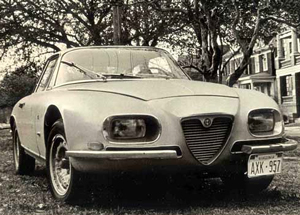
This Alfa Romeo 2600 Zagato was purchased for the princely sum of $1800 with very low mileage and in excellent condition. But that was in 1971.
That’s because the item being collected (actually, “accumulated” is more accurate at this stage) has been replaced by something newer, and has thus been rendered nearly valueless. This has been the case with almost every car ever made. In many cases, even today, there is a 25 or 30 year cycle before the car is considered “collectible.” Many cars we consider desirable today went through a period when they were scrapped or selling for nominal amounts. Charles Chayne found a Bugatti Royale in a wrecking yard.
Phase Two
“Scholarship in the field is nonexistent, and it largely remains ‘the blind leading the blind.’”
A few historically-inclined collectors become interested in the early development of their items, and they create a network to compare prices and a bit of selling or trading occurs. During late Phase Two, we see the emergence of some people with expertise in repair, although the term restore is too generous by far. Somewhere between Phase Two and Three, a new life form appears: the Dealer.” If you have some copies of Hemmings Motor News over the last forty years, it would be interesting to track this – heartbreaking, but interesting.
Phase Three
“Activity accelerates rapidly. Clubs devoted to the field begin to grow significantly. Scholarship shifts into high gear. Books discussing the field begin to appear. Vocabulary expands. Prices begin to rise at a rate which makes veteran collectors cringe. Later, older collectors begin to be squeezed by rising prices.”
Phase Four
“Prices rise to new heights every few months. Organized chaos seems to be all around the market.”
It is the end of “traditional” collecting: the collecting based on interest in, and love for, the items themselves. The day of the mega-collector has dawned, and collecting is now done with different motives than before. At some point, the item being collected becomes incidental. The spotlight swings to the deal, the dollars, and the exhibitionistic antics of the high rolling buyers.
Think I’m exaggerating? Spend a few days in Monterey this month. You’ll get the idea. To prepare you, here is the BS Quote of the Month, taken from a recent publication (I have left the speaker anonymous, since this quote is such a howler). Q: How is the market right now? A: “Cars have become sophisticated collectibles and the associated events have gained substantially in profile to complement their value and social desirability.” This quote pegs the BS Meter at a ten.
Priorities
“When I look back at the early stage I am driven to conclude that my collection owned me. I was merely the agent who made it happen, at an enormous expense of money and time. The next time you walk past a mirror, take a long look at your reflection. Ask it whether you own your collection, or it owns you.”
Well, I would have a hard time answering this, and if I was truthful I would probably have to confess it’s true. Just as I deluded myself that my house would always go up in value, so I continue to indulge in fantasy by believing that sometime soon, I will have all my cars restored and I will be caught up with everything.
The Business of Collecting
Here Givens says something that I think most collectors would acknowledge: Never collect anything because it appears to be a good investment. Collecting should be for enjoyment, for scholarship, for opportunity to meet people of like mind. But don’t delude yourself that you’re buying these things because they’ll make you rich.
What’s Next?
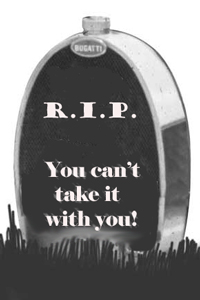 “It is incumbent on each of us to prepare for our inevitable demise as rationally as we can. The first step is to decide what will become of your collection when you die. It’s one of the most difficult jobs you’ll ever have to do. Do you want it to remain intact? Who will get it? Do you want to leave certain items to specific people? If it forms the basis of a museum, who will oversee it, and where will it be housed? What about endowment? No person is capable of dealing with it in the same way that you are. Few people will be half as delighted by the bequest of a large collection as they would be by receiving cash. Few executors are capable of breaking up a large collection. The disposal of the collection is likely to be handled hastily and carelessly, to meet legal deadlines for the settlement of the estate, or to quiet heirs who want their share of the proceeds. The conclusion: keep an up-to-date inventory, and consider selling your collection yourself, before you die.”
“It is incumbent on each of us to prepare for our inevitable demise as rationally as we can. The first step is to decide what will become of your collection when you die. It’s one of the most difficult jobs you’ll ever have to do. Do you want it to remain intact? Who will get it? Do you want to leave certain items to specific people? If it forms the basis of a museum, who will oversee it, and where will it be housed? What about endowment? No person is capable of dealing with it in the same way that you are. Few people will be half as delighted by the bequest of a large collection as they would be by receiving cash. Few executors are capable of breaking up a large collection. The disposal of the collection is likely to be handled hastily and carelessly, to meet legal deadlines for the settlement of the estate, or to quiet heirs who want their share of the proceeds. The conclusion: keep an up-to-date inventory, and consider selling your collection yourself, before you die.”
I know that this is true, but again I am deluding myself that it won’t happen to me, at least not for a while. Hmmm.
Stewardship: Every Collector’s Obligation
“The average collector acquires his collection haphazardly, with little or no organization or planning. Most collections just grow. In the highest form, collecting involves expertise, judgment, and taste. Without these qualities, the collector is actually little more than a hoarder. A true connoisseur transcends collecting via his knowledge and experience, which are based on judgment, discrimination, and above all good taste.”
“Many other psychological twists control collector behavior. One of them is based on the desire to show off, to impress others with one’s culture and at the same time display one’s wealth. It is not at all difficult to develop a profound dislike for these people, whose motives and actions exemplify some of the least-attractive qualities inherent in the human race.” Do tell.
“Ownership of a fine thing carries with it an obligation of stewardship. There is a moral obligation incumbent upon us to preserve good things for future generations. Recent years have seen a tendency among certain collectors to modify or alter a piece in various ways. That is sacrilege. These are pieces of history, not toys. How dare they destroy a piece of our cultural heritage so cavalierly?”
Conclusion
In ten pages, Givens has created a work of genius about collecting. Re-reading his work provides a valuable insight into car collecting. I have not been able to find the original publication, but if you want to see the entire piece, please email me and I will send it to you.The source is the AMICA (Automatic Musical Instrument Collectors’ Association) Bulletin
( http://www.amica.org).
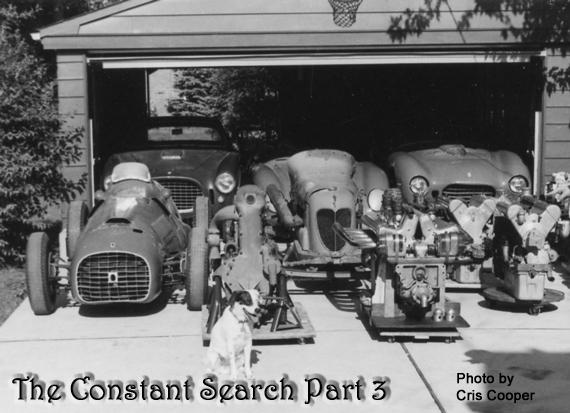
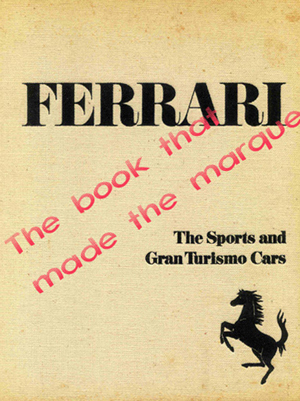
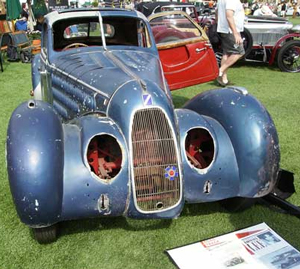

“I have not been able to find the original publication, but if you want to see the entire piece, please email me and I will send it to you.”
I would like to see the entire piece. So, how do we email the author? I don’t see an email address for Brandes Elitch.
I really disagree with your last paragraph, “Ownership of a fine thing…”. The Zen philosophy that you are just the caretaker for the next generation has its place but you have to remember that it’s your car or your book or whatever and you can do with it what you want. If you want to hot rod a ’32 Ford or race a vintage Bugatti go ahead and do it. Dave.
I would appreciate a copy of the original Givens article on collecting, thanks.
Good to see “stinky” once sgain. I remwember it in Roger Barlow’s possession,,he photographedcsr in Golden Gatepark 1949 and loved thst Talbot-Lago, csr once asgain in S,F,,whst i the ” tough decision”(?)
thank you for newsletter
Jim Sitz
Oregon
Brandy,
Thanks for Part 3. Excellent soul-searching. Perhaps the best summation of collecting that I’ve ever read!
I do agree with the final quote, “Ownership of a fine thing…”.
Yes, I’d like a copy also but not sure where to get the author’s email address to make the request.
The book on Ferrari credited with ‘making the marque’ was written by Warren Fitzgerald and Richard Merritt.
If i’m not mistaken the picture heading this column shows Dick Merritt’s Detroit garage in its heyday. You should have seen his cellar at the same time! You couldn’t walk across the floor for Ferrari engines! Dick rescued many fine artifacts as this picture indicates.
Thank you for such an informative explanation. Please include me as one who would like a complete copy.